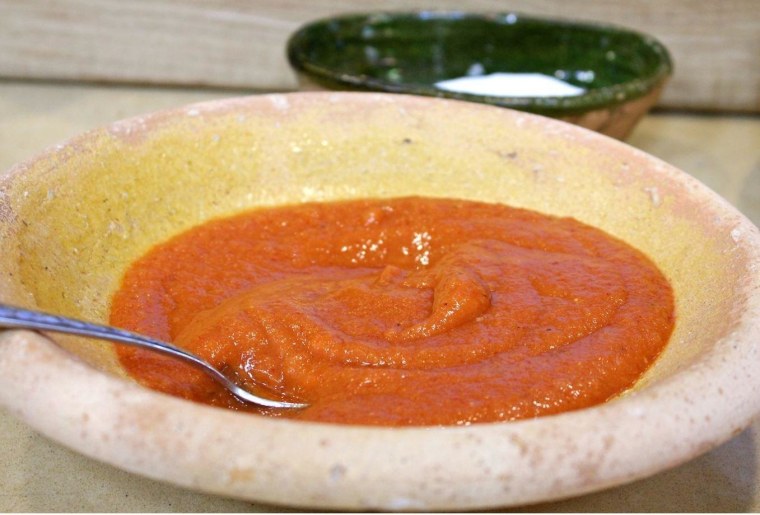It isn’t every day you discover an entirely new ingredient, something you had no idea existed let alone tasted this good. But that’s exactly what happened to us, the NBC Latino crew, while we attended the Culinary Institute of America’s Latin Flavor, American Kitchens conference last week in San Antonio.
It happened when we stepped into the kitchen with Roberto Santibañez, the chef-owner of New York’s Fonda restaurants (in Brooklyn and Manhattan) and author of “Truly Mexican” and the soon-to-be released “Tacos, Tortas and Tamales.” First, he taught us to call the ingredient by its name: xoconostle. (Pronounced: choko-nose-leh.) It is, he went on, the fruit of the cactus plant and similar to a prickly pear, which in recent years has grown in popularity, its sweet flesh often used to flavor margaritas. But the xoconostle is sour and tart instead and typically used to make salsas in Mexico. “They look like ugly, rough little fruits and when you see them you might think they’re no good,” he says. “But they are great, and delicious inside!”
Like so many traditional Mexican ingredients that once were hard to find in the U.S., today xoconostle is more commonly sold in Latin markets and bodegas. Santibañez used it to whip up a surprisingly simple salsa. He roasted the xoconostle on a comal, along with two garlic cloves and two dried chipotle chilies, pureed it all in a blender, added a little salt—and voila! With all of four ingredients, the salsa’s flavor was so complex it tasted as though there was much more in that blender. Eat it with chips or serve it alongside just about anything, like chicken, steak or shrimp.
Salsa de xoconostle/cactus fruit salsa
1 pound xoconostles (about 9)
2 small dried chipotle chiles, or 5 dried árbol chiles, wiped clean
1 medium garlic clove, peeled
by Text-Enhance" target="_blank">Kosher salt, to taste
1. Preheat the oven or toaster oven to broil, or to 500 F. Place the xoconostles on a foil-lined baking sheet and roast them in the oven, turning them over occasionally, until they’re lightly charred in spots and they give when you gently squeeze them, about 15 to 25 minutes. They will not be nearly as soft as fully roasted tomatoes or tomatillos. Let them cool slightly.
2. Meanwhile, heat a small pan over medium-low heat. Add the chiles and garlic to the pan and cook, turning them over occasionally, until the chiles blister, about 3 minutes, and the garlic is tender and slightly charred, about 8 minutes.
3. Use a spoon to scrape off the skin from the xoconostles, then halve them lengthwise and scoop out all the tough seeds. If the skin doesn’t come off easily, scrape the flesh out with the spoon.
4. In a blender, puree half the xoconostles with the chipotles, garlic, salt, and 2 tablespoons of water until the garlic and chilies are well broken down, then add the remaining xoconostles and pulse for a fairly chunky salsa. If it’s very thick, gradually add a little more water. Season to taste with salt. Makes a generous ½ cup. This salsa keeps in the refrigerator for up to five days.
Betty Cortina, senior consulting web producer for NBCLatino.com, believes salsa (the condiment as well as the music) makes the world a more delicious place.
More from NBC Latino:
